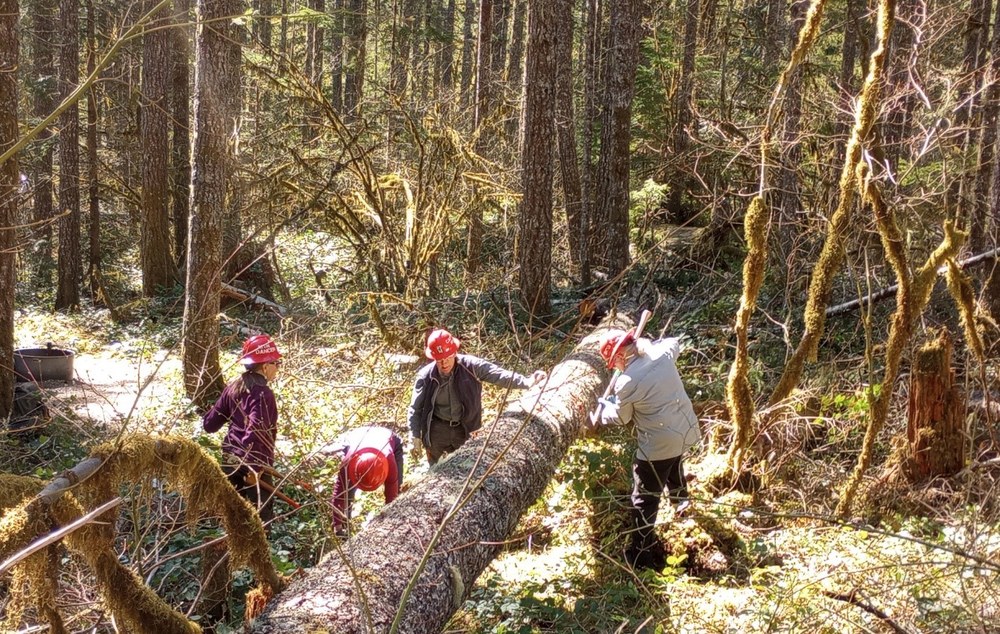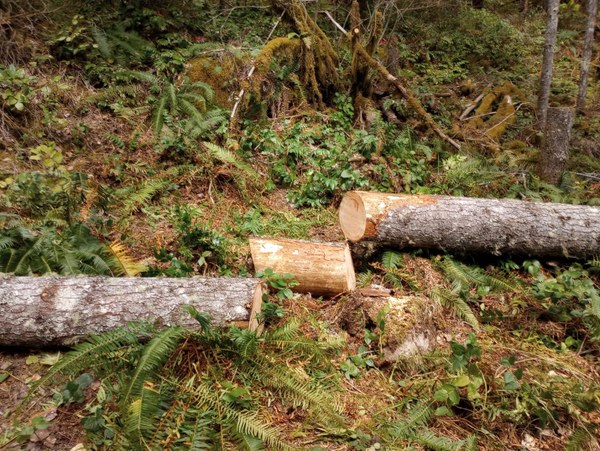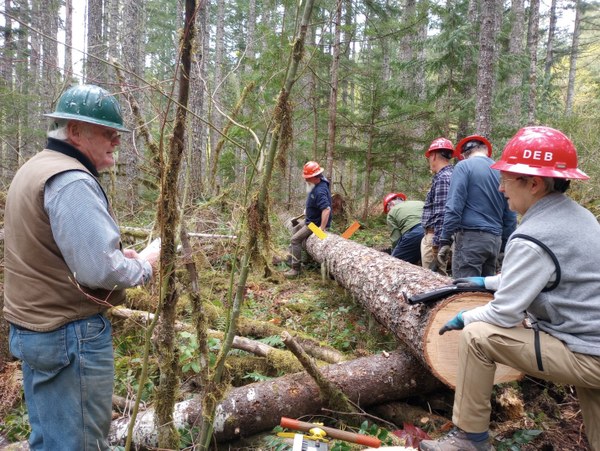
Have you ever wondered who builds and maintains the trails where you recreate, or who cuts the downed trees off the trails? We do.
The Olympia Mountaineers has been working closely with two agencies to help maintain our beloved trails. On Saturday, April 20, fourteen Olympia Mountaineers gathered at the Big Creek Campground in Hoodsport, near Lake Cushman, for a Crosscut Sawyer Recertification Class overseen by Tom Mix of the Backcountry Horsemen (BCHW).
Using saws in National Forests
In 2016, the U.S. Forest Service finalized a policy that provides nationally consistent training, evaluation, and certification requirements for the use of chain saws and crosscut saws in national forests. The policy governs the use of saws on lands managed by the Forest Service and ensures that Forest Service employees, volunteers, and partners will consistently have the best knowledge available and follow safe practices. The policy also allows that sawyers certified in one region are eligible to work in any of our regions, meaning that Forest Service partner agencies like the Pacific Crest Trail Association and the Backcountry Horsemen can develop their own training and certification programs that meet the directive's requirements.
Why Use A Crosscut Saw
In order to protect the wilderness character of our special places, the 1964 Wilderness Act established a National Wilderness preservation system that limits the types of activities permitted within designated Wilderness areas.
Wilderness must be primarily free from modern human manipulation and impact, and that personal experiences in natural environments must be relatively free from signs of modern society. Therefore, with few exceptions, mechanical transport and motorized equipment were deemed contrary to the nature of wilderness.
 Finished cut log containing top bind and end bind. Photo by regina Robinson.
Finished cut log containing top bind and end bind. Photo by regina Robinson.
These restrictions create unique challenges for land managers and volunteers charged with maintaining wilderness trails, who must rely solely on non-motorized tools in order to accomplish trail and forest maintenance goals. All heavy equipment must be hauled in by hand or in some instances, packed in using stock. All log bridges made, steps put in, limbs and bushes brushed back, drainages created for low lying areas, and downed trees removed across trails must be set in place or removed with sheer strength or human-powered rigging, and all log cutting must be performed without the aid of power saws. Thus, the crosscut saw is the tool of choice for maintaining trails in wilderness.
 Olympia Mountaineer Deb Yates discusses binds and leans with instructor Tom Mix. Photo by Regina Robinson.
Olympia Mountaineer Deb Yates discusses binds and leans with instructor Tom Mix. Photo by Regina Robinson.
Earn Your Crosscut Saw Badge
The Olympia Branch offers a certification class for crosscut sawing. This class follows the format recommended by the US Forest Service as well as other backcountry trail work associations, and is good for three years. An up-to-date First Aid and CPR card is required to receive the badge.
Add a comment
Log in to add comments.Nice to know why we use muscle-powered saws. Thanks, Regina.
Thank you Mike, as a fellow Sawyer, I have much to learn from you! Thank you for sharing your knowledge and expertise.
 Regina Robinson
Regina Robinson